How to Use a BAND-AID® Brand Adhesive Bandage
I recently spoke with a reader of this blog whose father worked as a salesman for Johnson & Johnson in the early 1920s. He told me that his father was one of the first people to demonstrate a new invention to doctors…the BAND-AID® Brand Adhesive Bandage.
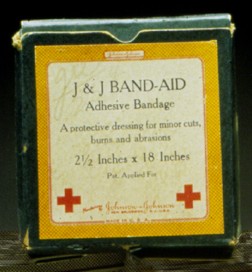
First BAND-AID® Brand Adhesive Bandage Package, 1921
Today we take BAND-AID® Brand Adhesive Bandages for granted, but before the invention of the product in 1920 by Earle Dickson, a young Company employee, there were no ready made adhesive bandages. People needing a small bandage had to make one themselves, and they were often too cumbersome to be easily applied by one person. Most people just used what they had in the house, which many times meant tying a piece of rag around the cut. Earle took two Johnson & Johnson products – adhesive tape and gauze – and combined them to make the first adhesive bandage to help his wife Josephine, who was constantly cutting or burning her fingers in the kitchen. Earle showed the folks at work what he invented. They loved it, and a new product was born.
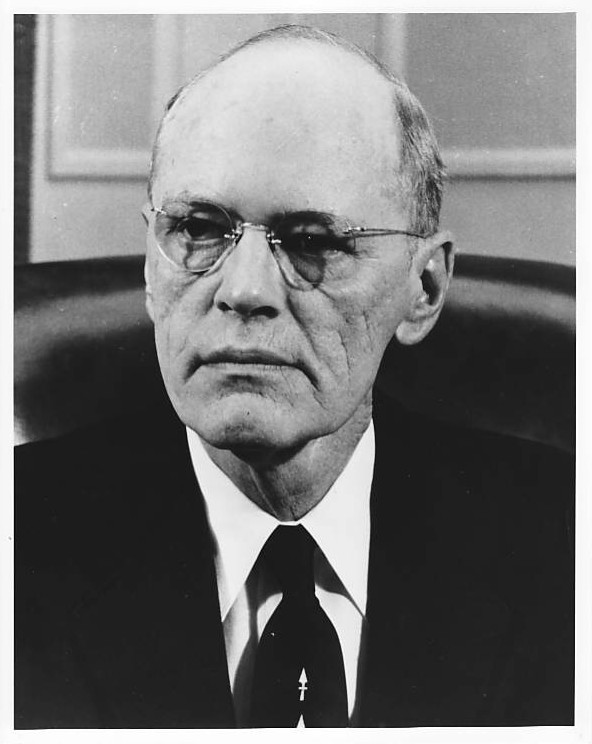
Earle Dickson, Inventor of the BAND-AID® Brand Adhesive Bandage, in later years. Earle became a member of the Board of Directors and a Vice President.
The first BAND-AID® Brand Adhesive Bandages were just as Earle had invented them – a long strip of adhesive tape 18 inches long and 2 ½ inches wide, with an inch-wide strip of gauze down the middle, covered in crinoline fabric to protect it and keep it clean. BAND-AID® Brand Adhesive Bandages were not made by machine and pre-cut until 1924. You would just cut off the width you needed, depending on the size of the cut or scrape you wanted to cover, peel off the fabric backing, and stick it on.
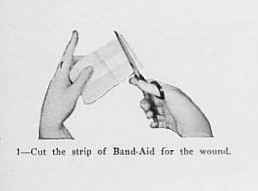
Step #1
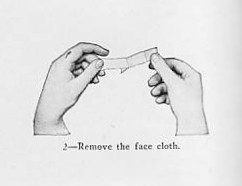
Step #2
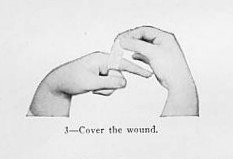
Step #3
Naturally, this needed demonstrating, which is where the salesmen (or travelers, as they were called in those days) came in. They showed the newfangled adhesive bandages to doctors, butchers (who apparently cut themselves a lot) and retail pharmacists. A Johnson & Johnson traveler would come in with his BAND-AID® Brand Adhesive Bandages and a pair of scissors, and demonstrate how the product should be used.
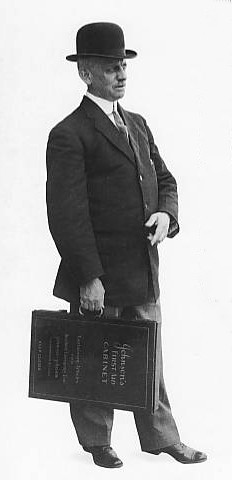
A Company Salesman, or Traveler, circa 1921
What did they say? It probably sounded a lot like a 1921 article in THE RED CROSS MESSENGER about the new product:
“Suppose you have a cut on your finger. Cut a piece of Band-Aid from the strip, pull off the face-cloth and put the bandage over the wound. That’s all there is to it. The bandage will stay right where you place it without tying. Can you imagine anything handier for the household or shop?” [THE RED CROSS MESSENGER, Vo. XIII, No. 6, 1921, p. 378]
The article, written to educate the retail druggists who sold the Company’s products, went on to state that the useful new product could be “applied instantly to the numerous cuts received by children at play and to the ordinary injuries incident to household or any mechanical work,” as well as holding other dressings in place, applying lotions, protecting blisters and more. Although the BAND-AID® Brand Adhesive Bandage had a slow start, it caught on and became one of the Company’s best-known products, due in part to the persistence of salesmen like the reader’s father. By the way, this site has some great pictures of classic BAND-AID® Brand Adhesive Bandage tins through the years, including some very old ones.
